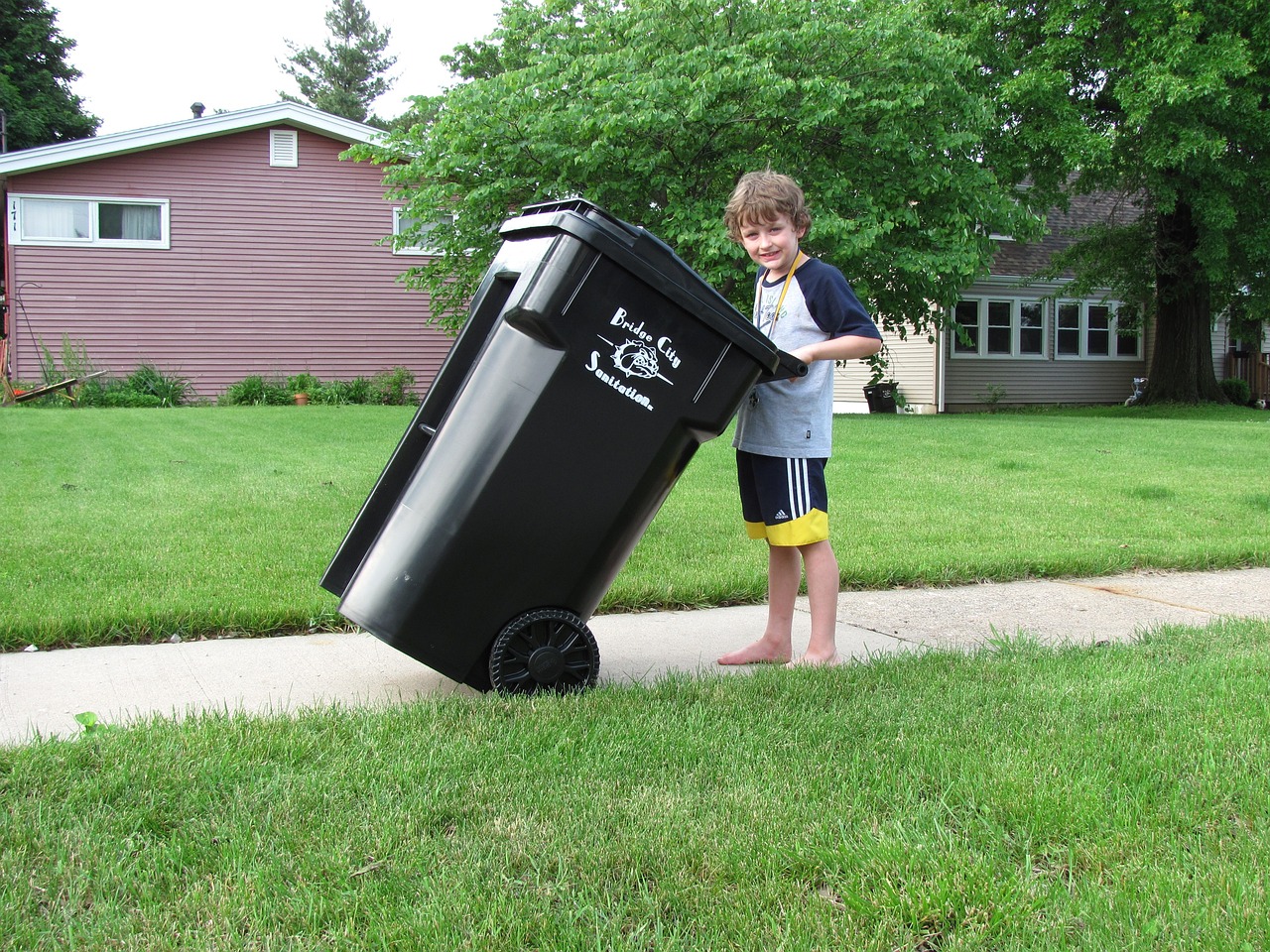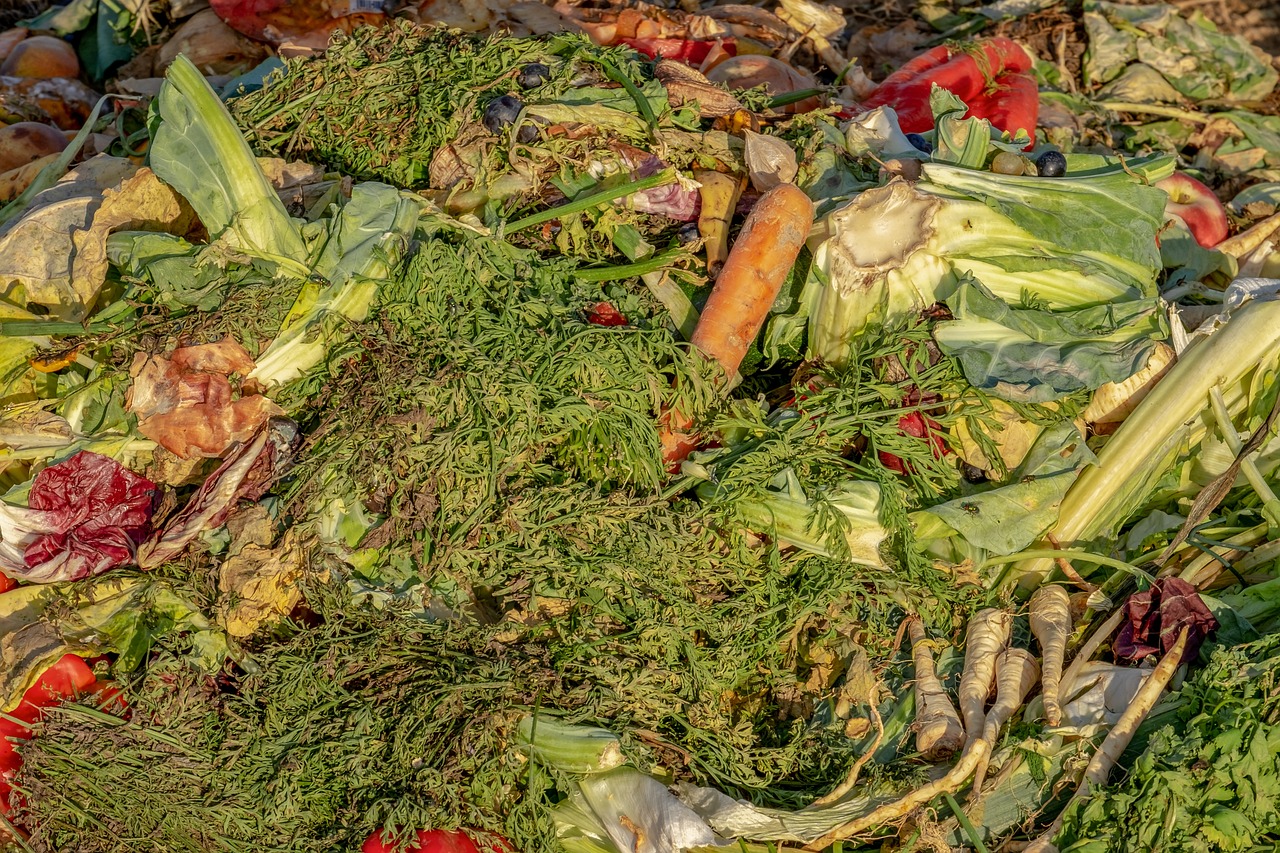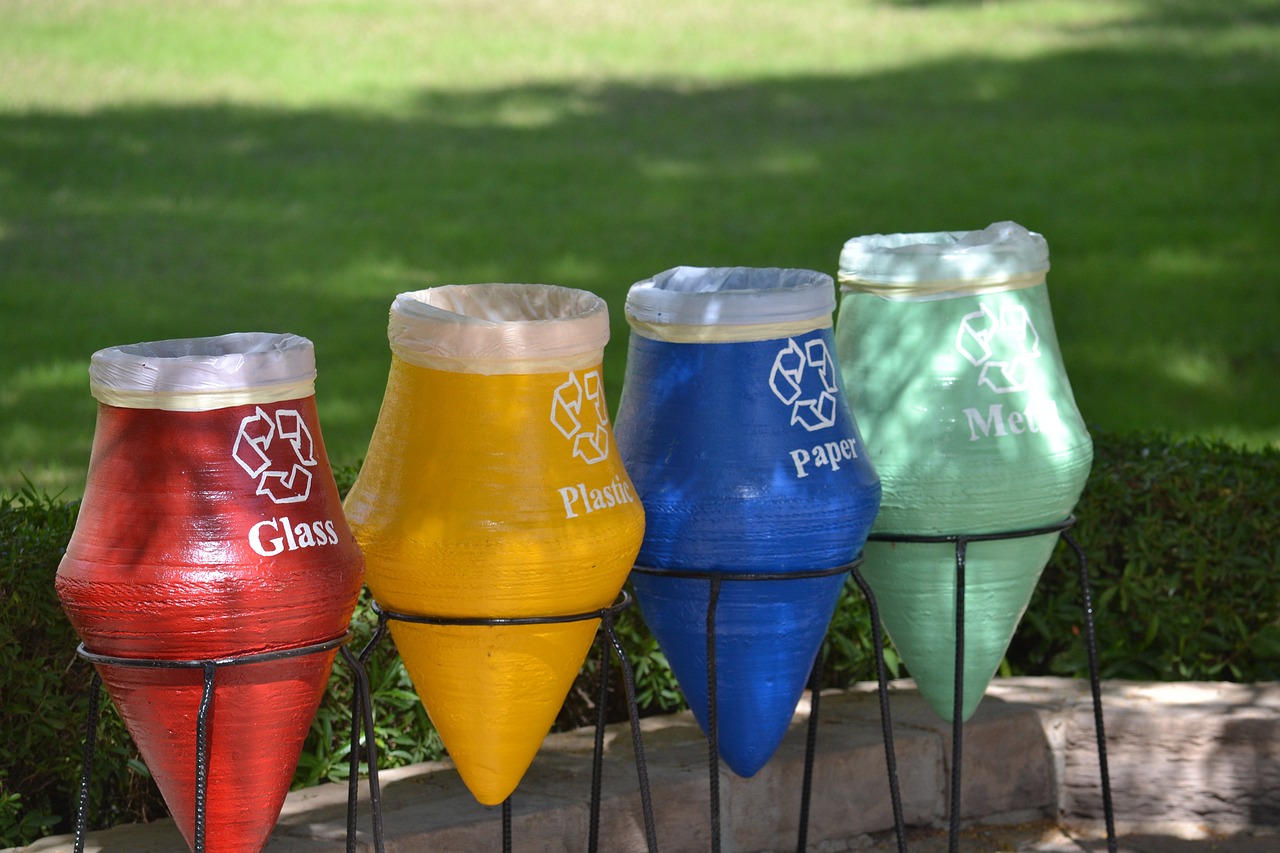Are We Recycling Enough - The Current State of Global Waste
In a world where waste seems to be piling up faster than we can manage it, the question of whether we are recycling enough has never been more pressing. With the global population soaring and consumption rates skyrocketing, the impact of our waste on the environment is staggering. Every year, millions of tons of waste end up in landfills, contributing to pollution and climate change. But here’s the kicker—recycling holds the key to mitigating these issues. It’s not just about throwing your plastic bottles in the blue bin; it’s about rethinking our entire approach to waste. So, are we really doing enough? Let's dive into the current landscape of global recycling, the hurdles we face, and the shining examples of success that can inspire change.
Recycling is not merely a buzzword; it’s a vital practice that can lead to significant environmental and economic benefits. By recycling, we reduce the amount of waste sent to landfills, conserve natural resources, and save energy. For instance, recycling one ton of paper can save 17 trees, 7,000 gallons of water, and 4,100 kilowatts of electricity. Can you imagine the collective impact if every household in the world made a conscious effort to recycle? Beyond the environmental benefits, recycling can also bolster the economy by creating jobs in the recycling and manufacturing sectors. It’s a win-win situation, but only if we can overcome the challenges that stand in our way.
When we look at the recycling rates around the globe, it’s clear that there is a wide gap between the leaders and the laggards. According to recent statistics, countries like Germany and Sweden boast impressive recycling rates of over 60%, while others struggle to reach even 10%. This disparity raises an important question: what are these successful countries doing right? In many cases, it boils down to effective policies, robust infrastructure, and a culture that prioritizes sustainability. Below is a table that highlights the recycling rates of various countries:
| Country | Recycling Rate (%) |
|---|---|
| Germany | 67.3 |
| Sweden | 49.6 |
| United States | 35.2 |
| Japan | 20.0 |
| India | 9.0 |
This table illustrates the stark contrast in recycling efforts globally. Countries that excel in recycling have implemented comprehensive systems that engage the public and promote awareness. For instance, Germany's dual system encourages consumers to separate their waste at the source, making it easier to recycle. On the other hand, nations with lower recycling rates often face challenges such as inadequate infrastructure and lack of public education about the importance of recycling.
So, what can we learn from these top recycling countries? The answer lies in their policies and practices. Effective recycling programs often include:
- Public Awareness Campaigns: Educating citizens about the importance of recycling and how to do it correctly.
- Incentive Programs: Offering rewards for recycling efforts, such as deposit return schemes for bottles.
- Robust Infrastructure: Providing accessible recycling bins and facilities to make recycling easy and convenient.
By adopting similar strategies, other countries can improve their recycling rates and contribute to a more sustainable future.
Germany is often hailed as a recycling superstar. With a recycling rate of over 67%, it has established a comprehensive waste management system that is the envy of many. The country’s success can be attributed to its Green Dot System, which requires manufacturers to take responsibility for their packaging waste. This system not only encourages recycling but also fosters public participation. Citizens are actively engaged in separating their waste, leading to cleaner streams for recycling. The result? A thriving circular economy where materials are reused, reducing the need for virgin resources.
Sweden takes a slightly different approach by integrating recycling with waste-to-energy solutions. With a recycling rate of nearly 50%, Sweden has developed innovative methods to convert waste into energy, reducing landfill use. The country’s commitment to sustainability is evident in its policies that promote recycling and energy recovery. By investing in advanced technologies and public education, Sweden has created a culture of environmental consciousness that other nations can aspire to emulate.
Despite the successes, the road to improved recycling rates is fraught with challenges. Contamination of recyclable materials is a significant issue, as it can lead to entire batches being sent to landfills. Additionally, many regions lack the necessary infrastructure to support effective recycling programs. Public awareness is another hurdle; without proper education, individuals may not understand how to recycle correctly. Addressing these challenges is crucial for enhancing global recycling efforts.
As we look to the future, innovations in recycling technology present exciting opportunities to improve recycling processes. Advances such as automation and artificial intelligence are revolutionizing how recycling facilities operate. These technologies streamline sorting processes, reduce human error, and ultimately lead to higher recycling rates. Imagine a world where machines can accurately sort recyclables at lightning speed—this is becoming a reality!
Artificial intelligence is paving the way for smarter recycling facilities. By employing machine learning algorithms, facilities can optimize sorting processes, ensuring that recyclable materials are accurately identified and separated. This not only increases efficiency but also significantly reduces contamination rates, making recycling more effective than ever before.
With the rise of biodegradable materials, we have new tools in our waste management arsenal. These materials can break down naturally, reducing the burden on landfills. However, it’s essential to understand how they fit into the recycling landscape. While biodegradable items can complement traditional recycling efforts, they can also complicate the recycling process if not properly managed. Education and clear labeling are crucial to ensure that consumers know how to dispose of these materials correctly.
- What is the best way to recycle at home? Start by separating your recyclables from your regular trash, and make sure to clean them before placing them in the recycling bin.
- Why is contamination a problem in recycling? Contamination occurs when non-recyclable materials are mixed with recyclables, leading to entire batches being sent to landfills.
- How can I encourage my community to recycle more? Organize local recycling events, educate your neighbors about the benefits of recycling, and advocate for better recycling infrastructure.

The Importance of Recycling
Recycling is not just a buzzword; it's a vital practice that shapes our planet's future. Imagine a world overflowing with waste—landfills brimming, oceans choked with plastic, and resources depleting faster than we can replenish them. Recycling plays a crucial role in combating this grim scenario. By turning waste into reusable materials, we can significantly reduce the amount of garbage we produce, conserving our planet's precious resources and minimizing environmental degradation.
From an environmental perspective, recycling helps to conserve natural habitats and reduce pollution. When we recycle materials like paper, plastic, and metals, we're essentially giving these items a second life. This process not only saves energy but also reduces greenhouse gas emissions. For instance, recycling aluminum cans saves 95% of the energy required to create new cans from raw materials. This is a staggering statistic that highlights the energy efficiency of recycling. Furthermore, by recycling, we can prevent harmful substances from entering our landfills and waterways, thus protecting wildlife and ecosystems.
Economically speaking, recycling can lead to significant savings and job creation. The recycling industry is a powerhouse for job generation, employing millions of people worldwide. According to recent statistics, for every job in the recycling sector, there are approximately 1.17 jobs created in the manufacturing sector. This ripple effect not only bolsters local economies but also fosters innovation and investment in sustainable practices. Companies can save on raw material costs by using recycled materials, which can lead to lower prices for consumers. In essence, recycling is not just an environmental imperative; it’s also an economic opportunity.
Moreover, recycling is essential for sustainable development. As the global population continues to grow, so does our consumption of resources. The United Nations has set ambitious goals for sustainable development, and recycling is integral to achieving these objectives. By adopting a circular economy model, where products are reused and recycled rather than discarded, we can create a more sustainable future. This model not only reduces waste but also promotes responsible consumption habits among individuals and businesses alike.
In conclusion, the importance of recycling cannot be overstated. It is a multifaceted solution that addresses environmental, economic, and social challenges. As we move forward, it’s essential for governments, businesses, and individuals to embrace recycling as a fundamental practice. By doing so, we can create a cleaner, greener, and more sustainable world for future generations. So, the next time you toss something in the trash, ask yourself: could this be recycled?
- What materials can be recycled? Most common materials include paper, cardboard, glass, metal, and certain plastics.
- How does recycling help the environment? Recycling reduces waste, conserves natural resources, saves energy, and lowers greenhouse gas emissions.
- Can recycling create jobs? Yes, the recycling industry creates jobs in collection, processing, and manufacturing.
- What can I do to improve recycling in my community? Educate others, participate in local recycling programs, and advocate for better recycling policies.

Current Recycling Rates Worldwide
When we look at the global landscape of recycling, it's like peering through a kaleidoscope—each turn reveals a different pattern. The current recycling rates worldwide showcase a mosaic of successes and failures, with some countries leading the charge while others lag significantly behind. According to recent statistics, the global average recycling rate hovers around 13%, which is alarmingly low considering the escalating waste crisis we face. This figure, however, does not tell the whole story. There are regions where recycling efforts are robust, and others where they are almost nonexistent.
For instance, countries like Germany and Sweden have set the bar incredibly high with recycling rates exceeding 60% and 50%, respectively. Their success can be attributed to a combination of effective policies, public engagement, and innovative technologies. On the flip side, many developing nations struggle with rates below 10%, primarily due to inadequate infrastructure and limited public awareness about the importance of recycling.
To give you a clearer picture, here’s a table summarizing the recycling rates of some key countries:
| Country | Recycling Rate (%) | Key Factors for Success |
|---|---|---|
| Germany | 67% | Strict regulations, public participation |
| Sweden | 49% | Waste-to-energy systems, public awareness |
| Japan | 45% | Community programs, advanced sorting technology |
| United States | 35% | Varying state policies, recycling incentives |
| India | 30% | Informal sector involvement, grassroots initiatives |
These disparities in recycling rates highlight the need for a global conversation about waste management practices. It's not just about numbers; it's about understanding the underlying reasons for these differences. For example, in countries with high recycling rates, there is often a strong emphasis on education and community involvement. Citizens are not just passive participants; they are active agents in the recycling process, which fosters a culture of sustainability.
Conversely, in regions where recycling rates are low, there tends to be a lack of infrastructure and education. Many people are simply unaware of how to recycle properly or the benefits of doing so. Contamination of recyclable materials is another significant challenge that can derail recycling efforts. When people don't know what can and cannot be recycled, they inadvertently throw non-recyclable items into the mix, making the entire batch unusable.
In summary, the current recycling rates worldwide reveal a complex picture that requires urgent attention. While some countries are setting exemplary standards, others are struggling to keep up. It’s clear that improving recycling rates is not just a matter of policy but also of public engagement and education. As we move forward, it’s essential to share best practices and develop innovative solutions that can elevate recycling efforts globally.

Top Recycling Countries
When we think about recycling, some countries immediately come to mind as shining examples of what can be achieved with the right policies, public engagement, and innovative practices. Germany, for instance, is often hailed as the global leader in recycling, boasting an impressive recycling rate of over 65%. This success can be attributed to its comprehensive waste management system that emphasizes not just recycling, but also reducing waste at the source. The country's "Green Dot" system encourages manufacturers to take responsibility for their packaging, which has led to a significant decrease in landfill waste.
Another standout is Sweden, which has taken recycling a step further by integrating waste-to-energy solutions into its waste management strategy. With a recycling rate nearing 50%, Sweden has effectively turned waste into a resource, generating energy from what would otherwise be discarded. The Swedish government has implemented strict regulations and incentives that promote recycling and discourage waste, making it a model for other nations to emulate.
Countries like Austria and Switzerland also deserve mention for their robust recycling initiatives. Austria has a recycling rate of around 58%, thanks to its efficient collection and sorting systems. Similarly, Switzerland's commitment to recycling is evident in its impressive performance, with over 50% of its waste being recycled. Both countries have established strong public awareness campaigns that educate citizens about the importance of recycling, ensuring high participation rates.
While these countries are leading the charge, it's essential to recognize that the success of recycling initiatives often stems from a combination of factors, including:
- Government Policies: Supportive legislation and regulations that promote recycling.
- Public Participation: Engaging the community through education and awareness programs.
- Innovative Technologies: Implementing advanced sorting and recycling technologies to improve efficiency.
As we look at these top recycling countries, it's clear that their success is not just about numbers; it's about creating a culture of sustainability where recycling is seen as a vital part of everyday life. The lessons learned from these nations can serve as a blueprint for others looking to enhance their recycling efforts and reduce waste on a global scale.

Case Study: Germany
Germany stands as a shining example in the realm of recycling, often hailed as a global leader in waste management. The country’s commitment to recycling is not just a mere trend; it’s deeply embedded in its culture and policies. In fact, Germany boasts an impressive recycling rate of over 67%, a figure that underscores the effectiveness of its comprehensive waste management system. But what exactly makes Germany's approach so successful? Let's dive into the key elements that contribute to its exemplary recycling practices.
One of the cornerstones of Germany's recycling success is its robust Extended Producer Responsibility (EPR) policy. This legislation mandates that manufacturers are responsible for the entire lifecycle of their products, including post-consumer waste. As a result, companies are incentivized to design products that are easier to recycle, ultimately reducing waste. This approach not only encourages innovation but also fosters a sense of accountability among producers.
Moreover, Germany has implemented a well-structured waste separation system that engages the public effectively. Households are provided with multiple bins to sort their waste into categories such as paper, plastics, organic waste, and residual waste. This clear separation at the source minimizes contamination, making recycling more efficient. In fact, studies show that communities with effective waste separation systems can increase recycling rates by as much as 30%.
| Type of Waste | Recycling Rate |
|---|---|
| Paper | 90% |
| Glass | 80% |
| Plastics | 50% |
| Organic Waste | 60% |
Public participation is another vital aspect of Germany's recycling strategy. The government runs extensive campaigns to educate citizens about the importance of recycling and how to do it correctly. Schools, community centers, and local governments collaborate to host workshops and provide informational materials, ensuring that everyone is on the same page. This grassroots involvement creates a culture of sustainability, where recycling becomes a shared responsibility rather than just a governmental obligation.
Additionally, Germany invests significantly in recycling technology and infrastructure. The country has established numerous state-of-the-art recycling facilities equipped with advanced sorting technologies that utilize AI and automation. These innovations not only streamline the recycling process but also enhance the quality of the recycled materials, making them more valuable in the market. With continuous investments in technology, Germany is poised to maintain its leadership position in global recycling efforts.
In summary, Germany's success in recycling is a multifaceted approach that combines stringent policies, public engagement, and cutting-edge technology. The country serves as a model for others looking to enhance their recycling initiatives. By embracing similar strategies, nations around the world can work towards a more sustainable future, reducing waste and conserving precious resources.
- What is Germany's recycling rate? Germany has an impressive recycling rate of over 67%.
- What is Extended Producer Responsibility? It is a policy that holds manufacturers responsible for the entire lifecycle of their products, including waste management.
- How does public participation affect recycling rates? Effective public participation can increase recycling rates by as much as 30% through proper waste separation.
- What technologies are used in German recycling facilities? Germany utilizes advanced sorting technologies, including AI and automation, to enhance recycling efficiency.

Case Study: Sweden
Sweden stands out as a beacon of innovation and commitment when it comes to recycling and waste management. With a recycling rate that often exceeds 50%, this Scandinavian nation has transformed its waste management system into a model for others to follow. But how did they achieve such remarkable success? The answer lies in a combination of government policies, public participation, and a strong cultural ethos surrounding sustainability.
One of the key factors behind Sweden's impressive recycling rates is its comprehensive waste management strategy, which includes a robust waste-to-energy program. Instead of merely discarding waste, Sweden has embraced the concept of turning waste into a resource. In fact, about 50% of the waste that isn’t recycled is converted into energy. This not only reduces landfill use but also provides a renewable energy source for the country. Sweden has even become a leader in importing waste from other countries to fuel its energy plants, showcasing how effective waste management can be both an environmental and economic asset.
Moreover, the Swedish government has implemented a variety of policies that encourage recycling at all levels. For instance, the country utilizes a deposit return system for bottles and cans, which incentivizes consumers to return their containers for recycling. This system has proven to be highly effective, with over 80% of beverage containers being returned. Additionally, the government provides funding for local recycling programs, ensuring that municipalities have the resources they need to implement effective waste management strategies.
Public participation is another cornerstone of Sweden's recycling success. The Swedish population is highly educated about the importance of recycling and waste reduction, thanks in part to extensive public awareness campaigns. Schools incorporate sustainability education into their curricula, teaching children the value of recycling from a young age. As a result, recycling has become a cultural norm, with citizens actively participating in sorting their waste and adhering to recycling guidelines.
To further illustrate Sweden's recycling prowess, consider the following table that compares its recycling rates to other countries:
| Country | Recycling Rate (%) |
|---|---|
| Sweden | 50+ |
| Germany | 56 |
| Austria | 53 |
| United States | 35 |
| Japan | 25 |
In conclusion, Sweden's approach to recycling and waste management is a testament to what can be achieved when a nation prioritizes sustainability. By integrating innovative policies, fostering public participation, and leveraging technology, Sweden not only manages its waste effectively but also sets a standard for the rest of the world. As other countries look to improve their recycling efforts, they would do well to study Sweden's comprehensive and holistic approach to waste management.
- What is Sweden's recycling rate? Sweden's recycling rate often exceeds 50%, making it one of the leaders in waste management.
- How does Sweden manage its waste-to-energy program? Sweden converts about 50% of its non-recycled waste into energy, reducing landfill use and providing renewable energy.
- What role does public participation play in Sweden's recycling success? The Swedish population is highly educated about recycling, and extensive public awareness campaigns have made recycling a cultural norm.

Challenges in Recycling
Despite the undeniable progress made in recycling initiatives around the globe, we still face a myriad of challenges that hinder our efforts to manage waste effectively. One of the most significant barriers is contamination. This occurs when non-recyclable materials are mixed in with recyclables, leading to entire batches being discarded. Imagine sorting through a pile of clean, crisp paper only to find a greasy pizza box buried underneath. Not only does this spoil the recycling process, but it also increases costs and reduces the quality of the recycled materials.
Another major challenge is the lack of infrastructure. In many regions, especially in developing countries, the recycling facilities are either non-existent or insufficient to handle the volume of waste generated. Without proper sorting centers, transportation systems, and processing plants, even the most well-intentioned recycling programs can fall flat. For instance, rural areas often lack access to recycling bins, leading to a reliance on landfills instead of sustainable waste management practices.
Public awareness and participation also play a crucial role in the effectiveness of recycling programs. Many individuals remain unaware of what can and cannot be recycled, resulting in significant amounts of recyclable materials ending up in the trash. Educational campaigns are essential to inform the public about proper recycling practices. A community that understands the importance of recycling is more likely to engage in sustainable behaviors.
Moreover, there’s the issue of economic viability. Recycling can sometimes be more expensive than producing new materials, especially when the cost of raw materials is low. This economic imbalance can discourage companies from investing in recycling initiatives. Additionally, fluctuating market prices for recycled materials can lead to uncertainty, making it difficult for businesses to commit to long-term recycling strategies.
Lastly, government policies and regulations can either facilitate or hinder recycling efforts. Inconsistent laws and lack of incentives for recycling can create a disjointed approach to waste management. Countries that have implemented comprehensive policies tend to see better recycling rates. For example, countries like Germany have established strict regulations that promote recycling, while others may lack the necessary framework.
In summary, while the challenges in recycling are significant, they are not insurmountable. By addressing contamination, improving infrastructure, raising public awareness, ensuring economic viability, and implementing supportive government policies, we can enhance our recycling efforts and move towards a more sustainable future.
- What are the main challenges in recycling? The main challenges include contamination of recyclables, lack of infrastructure, public awareness, economic viability, and inconsistent government policies.
- How can contamination be reduced? Education on proper recycling practices and providing clear guidelines can help reduce contamination.
- Why is public awareness important? Public awareness is crucial because informed individuals are more likely to recycle correctly and participate in recycling programs.
- What role does government play in recycling? Government policies can create a supportive environment for recycling through regulations, incentives, and funding for recycling programs.

Innovations in Recycling Technology
As we navigate the complexities of waste management, are emerging as game-changers in the quest for sustainability. These advancements not only enhance the efficiency of recycling processes but also pave the way for a cleaner, greener future. Imagine a world where sorting waste is as seamless as swiping your phone screen; that’s the potential we’re unlocking with cutting-edge technologies. From automated sorting systems to artificial intelligence, the recycling landscape is becoming increasingly sophisticated, allowing for higher recovery rates and less contamination.
One of the most exciting developments in recycling technology is the use of artificial intelligence (AI). AI-powered systems can analyze and categorize materials at lightning speed, significantly reducing the time it takes to sort recyclables. For instance, AI can identify different types of plastics and metals, ensuring that they are processed correctly. This not only boosts recycling rates but also minimizes the risk of contamination, which is one of the biggest challenges in recycling today. The efficiency of these systems means less waste ends up in landfills, ultimately contributing to a healthier planet.
Additionally, automation plays a crucial role in modern recycling facilities. With the introduction of robotic arms and conveyor systems, the manual labor involved in sorting recyclables is dramatically reduced. These machines can work tirelessly, sorting through tons of waste with precision that humans simply cannot match. For example, some facilities have reported a 30% increase in recycling rates thanks to the implementation of automated sorting technologies. This not only saves time and labor costs but also enhances the overall effectiveness of recycling operations.
Another noteworthy innovation is the development of smart recycling bins. These bins are equipped with sensors that can detect how full they are and even identify the types of materials being disposed of. This data can be transmitted to waste management companies, allowing for more efficient collection routes and schedules. Imagine a city where collection trucks only visit bins that are full, reducing fuel consumption and greenhouse gas emissions. This is not just a dream; it's becoming a reality in various urban areas around the world.
Moreover, the rise of biodegradable materials is shaping the future of waste management. These materials, designed to break down more easily in the environment, present both opportunities and challenges for recycling systems. While they can reduce the volume of waste that needs to be processed, they can also complicate recycling efforts if not managed correctly. For example, if biodegradable materials are mixed with traditional plastics, they can contaminate the recycling stream, leading to more waste being sent to landfills. Therefore, it’s crucial for recycling programs to adapt and educate the public on proper disposal methods.
As we look ahead, the integration of these technologies will be vital in addressing the growing waste crisis. By embracing innovations in recycling, we can transform how we manage waste and move towards a more sustainable future. The collaboration between technology developers, waste management companies, and consumers will be key in creating a circular economy where materials are reused, recycled, and repurposed effectively.
- What are smart recycling bins? Smart recycling bins are equipped with sensors to monitor their fill levels and identify the types of materials being disposed of, optimizing collection routes for waste management.
- How does AI improve recycling efficiency? AI enhances recycling by quickly sorting and categorizing materials, reducing contamination and increasing recovery rates.
- What challenges do biodegradable materials present? While biodegradable materials can reduce waste, they can contaminate traditional recycling streams if not disposed of correctly.
- What role does automation play in recycling? Automation reduces the need for manual labor in sorting processes, increasing efficiency and accuracy in recycling facilities.

AI and Automation in Recycling
In recent years, the integration of artificial intelligence (AI) and automation into recycling processes has significantly transformed the landscape of waste management. Imagine a world where sorting through heaps of trash is as efficient as sorting through your favorite playlist. Well, that’s the reality we’re stepping into! AI technologies are now capable of identifying materials with remarkable accuracy, allowing recycling facilities to streamline their operations and drastically reduce human error.
One of the most exciting aspects of AI in recycling is its ability to analyze and learn from data. By utilizing machine learning algorithms, these systems can improve their sorting capabilities over time. For instance, they can recognize different types of plastics, metals, and paper products, sorting them into the correct bins faster than any human could. This not only enhances the efficiency of recycling facilities but also increases the quality of the recycled materials, making them more valuable in the market.
Automation complements AI by handling the physical aspects of sorting and processing waste. Robotic arms, equipped with advanced sensors, can swiftly pick and place materials onto conveyor belts, reducing the need for manual labor. This is particularly beneficial in high-volume recycling centers where the sheer volume of waste can be overwhelming. The combination of AI and automation creates a synergistic effect that helps facilities operate at peak efficiency.
Moreover, the financial implications of these technologies are noteworthy. While the initial investment in AI and automation technology can be substantial, the long-term savings and increased productivity often outweigh these costs. Facilities can process more waste in less time, which translates to higher recycling rates and lower operational costs. According to a recent study, facilities that adopted AI and automation reported an increase in recycling rates by up to 30% within the first year of implementation.
However, it's essential to recognize that the journey is not without its challenges. The implementation of AI and automation requires a skilled workforce to manage and maintain these systems. Additionally, there is a need for ongoing investment in technology and training to ensure that facilities can adapt to evolving waste streams. As we move forward, collaboration between technology providers and recycling facilities will be crucial to overcoming these hurdles.
In conclusion, the fusion of AI and automation into the recycling process is not just a trend; it’s a necessary evolution in how we manage waste. By embracing these technologies, we can significantly enhance recycling efficiency, reduce contamination, and ultimately contribute to a more sustainable future. The question remains: are we ready to adapt and innovate for the sake of our planet?
- How does AI improve recycling rates?
AI improves recycling rates by accurately identifying and sorting materials, which reduces contamination and increases the quality of recyclables. - What role do robots play in recycling?
Robots automate the sorting process, handling large volumes of waste quickly and efficiently, thus minimizing the need for human labor. - Are there any downsides to using AI in recycling?
While AI offers many benefits, challenges include the need for skilled workers to manage the technology and the initial investment costs. - Can AI and automation fully replace human workers in recycling?
While they can significantly reduce the need for manual labor, human oversight is still necessary for quality control and system maintenance.

Biodegradable Materials and Their Impact
In recent years, the conversation around waste management has increasingly shifted towards the role of biodegradable materials. These materials, which break down naturally in the environment, present a promising alternative to traditional plastics that contribute significantly to pollution. But what exactly are biodegradable materials, and how do they impact our recycling efforts and the environment as a whole? To put it simply, biodegradable materials can be defined as substances that are capable of being decomposed by bacteria or other biological means, leading to a reduction in waste accumulation.
One of the most significant advantages of biodegradable materials is their potential to reduce landfill waste. When disposed of properly, these materials break down into natural components, enriching the soil rather than harming it. This is in stark contrast to conventional plastics, which can take hundreds of years to decompose, leaching harmful chemicals into the ground and waterways during that time. Imagine a world where the waste we produce can nourish the earth instead of poisoning it; that’s the promise biodegradable materials hold.
However, the integration of biodegradable materials into our waste management systems is not without its challenges. For instance, many biodegradable products require specific conditions to decompose effectively. This means that if they end up in a landfill, where oxygen and moisture are limited, they may not break down as intended. Additionally, there is a growing concern about contamination in recycling streams. When biodegradable materials are mixed with traditional recyclables, they can compromise the quality of recycled products, leading to increased costs and inefficiencies in recycling processes.
To illustrate the impact of biodegradable materials, consider the following table that compares the decomposition times of various materials:
| Material | Decomposition Time |
|---|---|
| Plastic Bag | 10-1000 years |
| Glass Bottle | 1 million years |
| Biodegradable Plastic | 3-6 months (in ideal conditions) |
| Food Waste | 2-3 months |
As we can see, biodegradable plastics and food waste have a significantly shorter decomposition time compared to their traditional counterparts. This highlights the potential for biodegradable materials to alleviate some of the burdens on our waste management systems. Yet, it's essential to recognize that simply replacing conventional materials with biodegradable ones is not a panacea. We must also focus on education and infrastructure to ensure that these materials are disposed of correctly.
Moreover, the rise of biodegradable materials has sparked innovation in product design and manufacturing. Companies are increasingly investing in research to develop new biodegradable options that can serve as substitutes for traditional plastics. This not only helps in reducing plastic pollution but also encourages a shift towards more sustainable practices across industries.
In conclusion, biodegradable materials hold immense potential for transforming waste management and enhancing our recycling efforts. However, to fully harness their benefits, we must address the challenges they present, such as contamination and the need for proper disposal methods. By doing so, we can pave the way for a more sustainable future, where waste is not merely a problem to be managed but a resource to be cherished.
- What are biodegradable materials? Biodegradable materials are substances that can be broken down by microorganisms into natural components, reducing waste accumulation.
- How long does it take for biodegradable materials to decompose? The decomposition time varies; for example, biodegradable plastics can decompose in 3-6 months under ideal conditions, while traditional plastics can take hundreds of years.
- Can biodegradable materials be recycled? Yes, but they must be separated from traditional recyclables to avoid contamination and ensure effective recycling processes.
- What are the environmental benefits of using biodegradable materials? They help reduce landfill waste, minimize pollution, and can enrich the soil when disposed of properly.
Frequently Asked Questions
- What is recycling and why is it important?
Recycling is the process of converting waste materials into new products. It's crucial because it helps reduce the amount of waste sent to landfills, conserves natural resources, and decreases pollution. By recycling, we can also save energy and promote sustainable development, making our planet a healthier place to live.
- What are the current global recycling rates?
Global recycling rates vary significantly by country. While some nations like Germany and Sweden excel with rates above 50%, others struggle with rates below 10%. These disparities highlight the need for improved recycling initiatives and infrastructure in many regions.
- How do top recycling countries achieve their success?
Countries that excel in recycling often implement comprehensive policies, engage the public through education, and invest in advanced waste management technologies. For instance, Germany's deposit return system encourages consumers to return bottles for recycling, while Sweden's focus on waste-to-energy solutions maximizes resource use.
- What challenges do recycling programs face?
Many recycling programs encounter obstacles such as contamination of recyclables, insufficient infrastructure, and a lack of public awareness. These challenges can hinder the effectiveness of recycling efforts, making it essential to address them through education and improved facilities.
- How is technology improving recycling processes?
Innovations like artificial intelligence and automation are transforming recycling facilities. These technologies enhance sorting accuracy, reduce human error, and streamline operations, ultimately leading to higher recycling rates and more efficient waste management.
- What role do biodegradable materials play in waste management?
Biodegradable materials can complement traditional recycling efforts by breaking down naturally and reducing landfill waste. However, they also present challenges, as they require specific conditions to decompose effectively, making it crucial to educate the public on proper disposal methods.



















